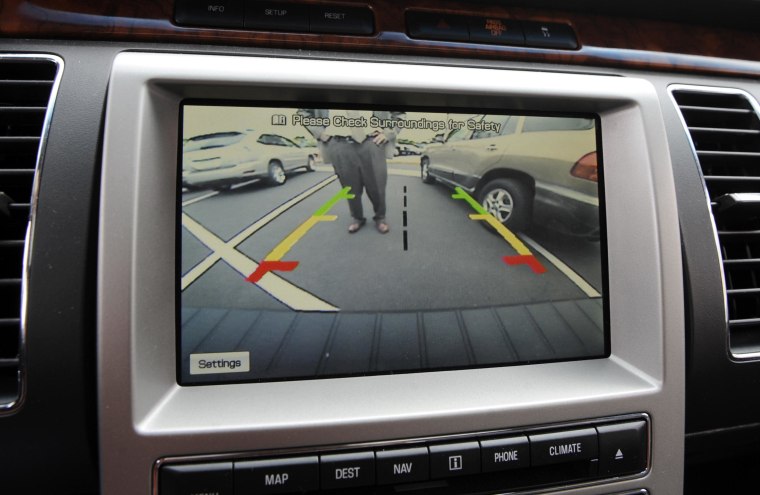Dashboard cameras are far more effective at spotting children and other obstacles behind a reversing vehicle than less sophisticated parking sensors – or drivers using their mirrors, a study shows, adding support to a proposed rule that would require so-called backup cameras
Such cameras are already found on many of the latest cars, trucks and crossovers, but the National Highway Traffic Safety Administration has repeatedly delayed announcing formal rules that would make them mandatory – something Congress and President Bush authorized in 2007. That’s despite NHTSA’s own estimate that the devices could save as many as 200 lives a year – including a large number of children under the age of five – inadvertently run over when motorists back up.
"Right now, cameras appear to be the most promising technology for addressing this particularly tragic type of crash, which frequently claims the lives of young children in the driveways of their own homes," said David Zuby, executive vice president and chief research officer for the Insurance Institute for Highway Safety, which conducted the new study.
The IIHS had volunteers check the effectiveness of cameras in a series of tests conducted in an empty parking lot. They were compared to vehicles without warning systems, and those equipped with electronic sensors that use sonar or radar to spot an obstacle, issuing beeps to warn motorists .
The study showed that vehicles with backup cameras reduced the driver's blind zone, on average, by 90 percent.
According to NHTSA research that could make a significant difference. The agency notes that about 292 people are killed each year in backup accidents – including 100 children younger than five -- with another 18,000 injured. NHTSA estimates using cameras could reduce the death toll to between 95 and 112 annually, while also preventing as many as 8,374 injuries.
NHTSA has sent a proposal to the White House for review and expects to have the regulations finalized by next January, in time to begin requiring the technology by available for 2017 model-year vehicles.
US Justice Dept. Launches Investigation of GM Switch Recall
Average American Can No Longer Afford the "Average-Price" New Car or Truck
Even Richest Motorists Going Green; Rolls, Bentley Adding Plug-in Hybrids
